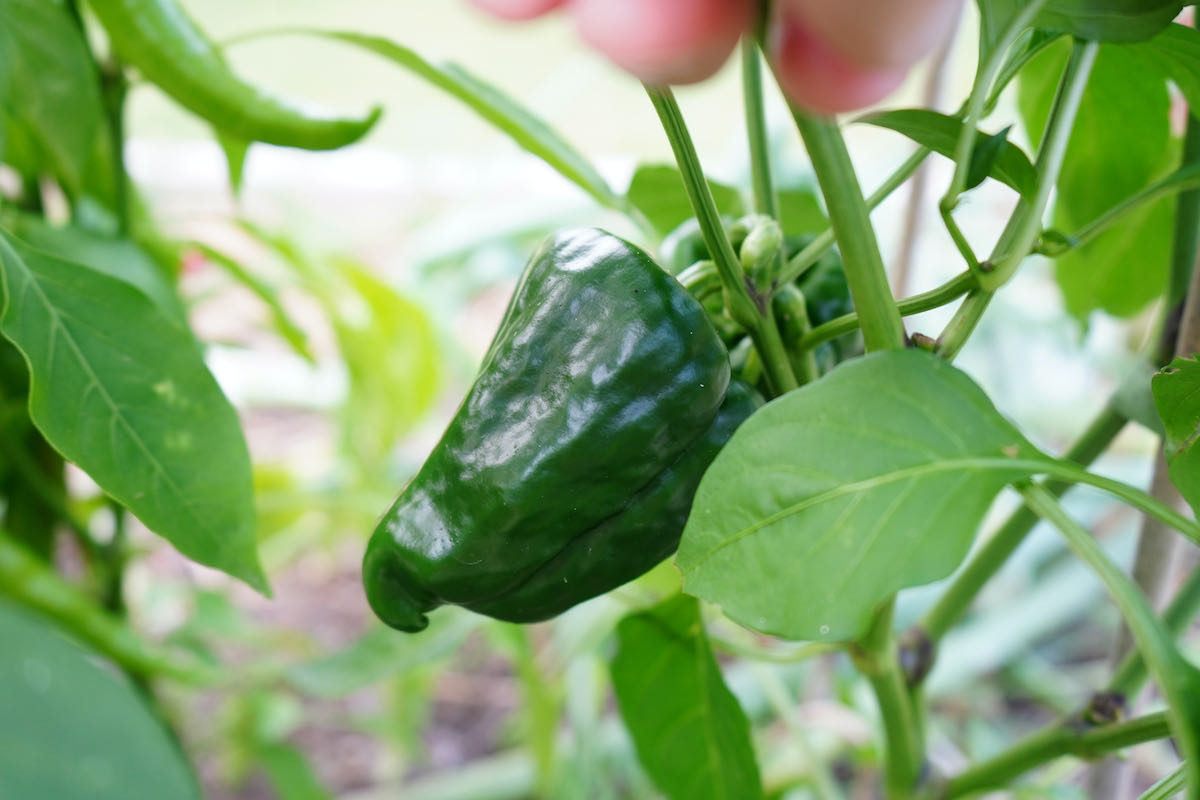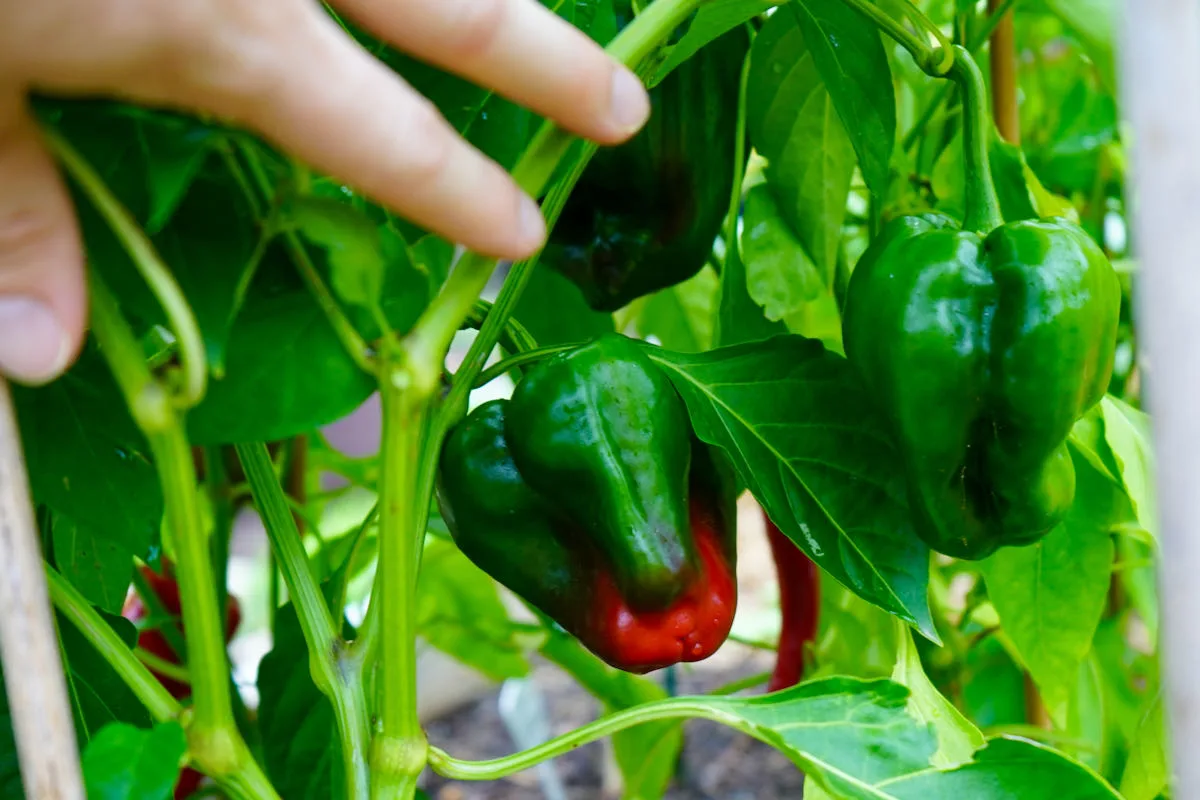When To Pick Poblano Peppers: Your Ultimate Guide For Harvesting Flavor
So, you’re growing poblano peppers, and now you’re wondering when to pick them, right? Like, how do you know if they’re ready or not? Are they supposed to be green, or can they turn red? And what happens if you leave them on the plant too long? Don’t worry, my friend, because we’ve got all the answers you need. Harvesting poblano peppers at the right time is key to getting that perfect balance of flavor and texture, and this guide will walk you through everything you need to know.
Poblano peppers are more than just a spicy kick in your favorite recipes—they’re a staple in Mexican cuisine and can take your meals from ordinary to extraordinary. But timing is everything when it comes to picking these beauties. Harvest them too early, and they might lack that rich, earthy flavor. Wait too long, and they could lose their signature texture. Let’s dive into the details so you can enjoy the best possible results from your garden.
Whether you’re a seasoned gardener or a newbie trying out your green thumb for the first time, this guide will help you master the art of harvesting poblano peppers. We’ll cover everything from recognizing the signs of ripeness to storing your peppers for maximum freshness. Let’s get started!
Read also:Adalberto Martiacutenez Resortes A Celebrated Icon In Mexican Comedy
Here’s a quick rundown of what we’ll cover:
- Know Your Plant: Understanding Poblano Peppers
- Signs of Readiness: When Are Poblanos Ready to Pick?
- Color Matters: Green vs. Red Poblanos
- Harvesting Tips: How to Pick Poblanos Without Damaging the Plant
- Storage Options: Keeping Your Peppers Fresh
- Common Mistakes to Avoid
- Recipes: What to Do with Fresh Poblanos
- Troubleshooting: What If My Peppers Aren’t Ripening?
- Health Benefits: Why Poblanos Are Good for You
- Conclusion: Timing Is Everything
Know Your Plant: Understanding Poblano Peppers
Poblano peppers are a type of chili pepper that originated in Puebla, Mexico. They’re known for their mild heat and rich, slightly sweet flavor, making them perfect for stuffing, roasting, or adding to sauces. But before we dive into the harvesting process, let’s talk about what makes these peppers so special.
Key Characteristics of Poblano Peppers
Poblanos are medium-sized peppers, usually around 4 to 6 inches long and 2 to 3 inches wide. They have a thick, glossy skin that starts out green and can turn red if left on the plant long enough. The heat level of poblanos is relatively low, ranking between 1,000 and 2,000 Scoville Heat Units (SHU), which means they’re not too spicy for most people. However, the heat can vary depending on growing conditions, so it’s always a good idea to taste-test a few before using them in your recipes.
Why Timing Matters
Harvesting poblano peppers at the right time ensures that you get the best flavor and texture. If you pick them too early, they might be too firm and lack the depth of flavor that makes poblanos so delicious. On the other hand, leaving them on the plant for too long can cause them to become overly ripe, which can affect their texture and make them less suitable for certain dishes.
Signs of Readiness: When Are Poblanos Ready to Pick?
Now that you know what to look for in a poblano pepper, let’s talk about how to determine when they’re ready to be harvested. Here are some key signs to watch for:
- Size: Poblanos should be about 4 to 6 inches long and 2 to 3 inches wide when they’re ready to pick.
- Color: Most people harvest poblanos when they’re green, but they can also turn red if left on the plant longer. Red poblanos tend to be sweeter and slightly spicier than their green counterparts.
- Firmness: Gently squeeze the pepper to check its firmness. It should feel firm but not hard. If it feels soft or mushy, it might be overripe.
- Weight: A ripe poblano pepper will feel heavy for its size. This indicates that it’s full of water and nutrients, which contribute to its flavor.
Color Matters: Green vs. Red Poblanos
One of the coolest things about poblano peppers is that they can be harvested at different stages of maturity, depending on your preference. Green poblanos are typically picked when they’re fully grown but still unripe, while red poblanos are allowed to ripen further on the plant. Here’s a breakdown of the differences:
Read also:Exploring Free Remote Access Solutions For Iot Devices
Green Poblanos
Green poblanos are the most commonly harvested variety and are perfect for dishes like chiles rellenos, soups, and stews. They have a fresh, earthy flavor with just a hint of heat. If you’re looking for a milder pepper, green poblanos are the way to go.
Red Poblanos
Red poblanos are left on the plant longer, allowing them to develop a sweeter, richer flavor. They’re often used in dried forms, such as ancho peppers, which are popular in mole sauces. If you’re feeling adventurous, try letting some of your poblanos ripen to red for a more complex taste experience.
Harvesting Tips: How to Pick Poblanos Without Damaging the Plant
Once you’ve determined that your poblanos are ready to be picked, it’s time to harvest them. But how do you do it without damaging the plant? Follow these tips to ensure a smooth and successful harvest:
- Use scissors or pruning shears: Instead of pulling the peppers off the plant, use a pair of clean scissors or pruning shears to cut the stem about half an inch above the pepper. This prevents damage to the plant and ensures that the pepper remains intact.
- Pick early in the morning: Harvesting poblanos in the morning when the temperatures are cooler can help preserve their freshness and flavor.
- Handle with care: Poblanos have a thick skin, but they can still bruise if handled roughly. Be gentle when picking and storing them to avoid any damage.
Storage Options: Keeping Your Peppers Fresh
After you’ve harvested your poblanos, the next step is to store them properly to maintain their freshness. Here are some options:
Refrigeration
Place your poblanos in a plastic bag or container and store them in the refrigerator. They should last for about a week if kept at a temperature of 40°F (4°C). Make sure to check them regularly for signs of spoilage, such as soft spots or mold.
Freezing
If you have more poblanos than you can use fresh, freezing is a great option. Simply wash and dry the peppers, then slice or chop them as needed. Place them in an airtight container or freezer bag and store them in the freezer for up to six months. Frozen poblanos are perfect for adding to soups, stews, and casseroles.
Common Mistakes to Avoid
Even the most experienced gardeners can make mistakes when harvesting poblanos. Here are a few to watch out for:
- Picking too early: Harvesting poblanos before they’re fully grown can result in a lack of flavor and texture. Be patient and wait until they reach the right size and firmness.
- Leaving them on the plant too long: While it’s okay to let some poblanos ripen to red, leaving them on the plant for too long can cause them to become overly ripe and lose their texture.
- Pulling instead of cutting: Pulling the peppers off the plant can damage the branches and affect future growth. Always use scissors or pruning shears to make a clean cut.
Recipes: What to Do with Fresh Poblanos
Now that you’ve harvested your poblanos, it’s time to get cooking! Here are a few recipe ideas to inspire you:
Chiles Rellenos
This classic Mexican dish features roasted poblanos stuffed with cheese, meat, or beans, then coated in batter and fried until golden brown. It’s a delicious way to showcase the flavor of fresh poblanos.
Roasted Poblano Soup
For a comforting and flavorful meal, try making roasted poblano soup. Simply roast the peppers in the oven, then blend them with tomatoes, onions, and spices for a creamy, savory soup that’s perfect for any occasion.
Troubleshooting: What If My Peppers Aren’t Ripening?
Sometimes, despite our best efforts, poblanos can be slow to ripen. If you’re experiencing this issue, here are a few things to consider:
- Temperature: Poblanos need warm temperatures to ripen properly. If the weather has been cool, they might take longer to mature.
- Water: Make sure your plants are getting enough water, but not too much. Overwatering can prevent proper ripening.
- Fertilizer: Use a balanced fertilizer to ensure your plants have the nutrients they need to produce healthy peppers.
Health Benefits: Why Poblanos Are Good for You
In addition to being delicious, poblanos are also packed with nutrients that are good for your health. They’re high in vitamin C, vitamin A, and fiber, making them a great addition to any diet. Plus, the capsaicin in poblanos can help boost metabolism and reduce inflammation. So, not only are you treating your taste buds, but you’re also doing your body a favor!
Conclusion: Timing Is Everything
Harvesting poblano peppers at the right time is crucial for getting the best flavor and texture. By paying attention to signs of readiness, such as size, color, and firmness, you can ensure that your peppers are at their peak when you pick them. Whether you prefer green or red poblanos, there’s a world of culinary possibilities waiting for you. So, get out there, harvest your peppers, and start cooking up a storm!
Don’t forget to share your experiences in the comments below. What’s your favorite way to use fresh poblanos? And if you found this guide helpful, be sure to share it with your fellow gardening enthusiasts. Happy harvesting!


